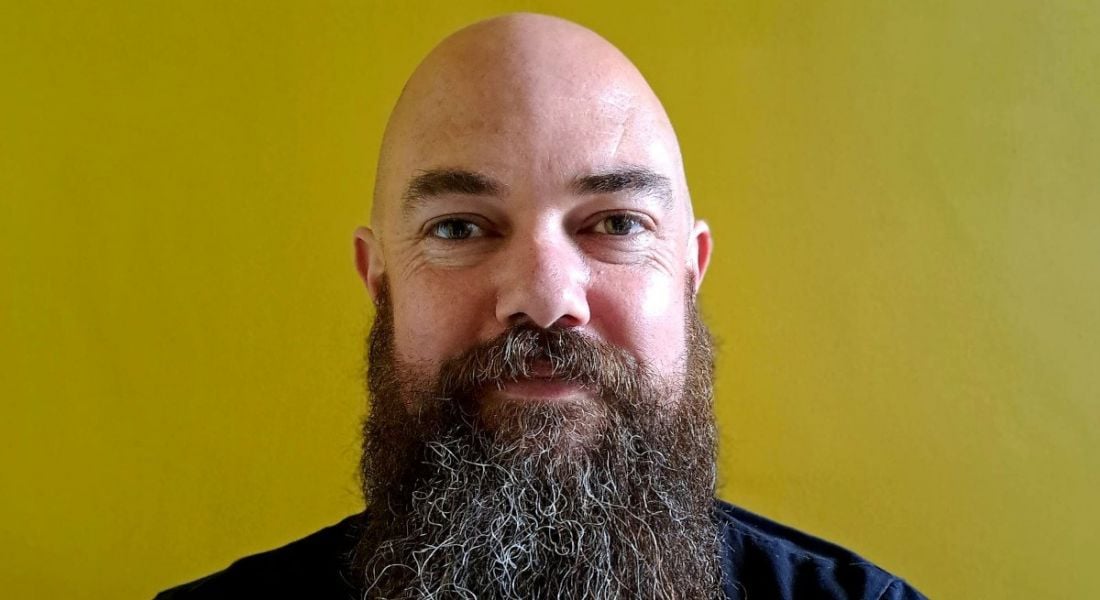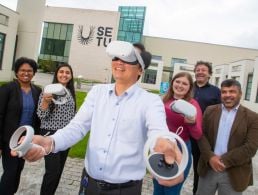Keith Tracey knows drones, gaming and construction. Now he has pivoted to working in 3D printing thanks to an interest that began as a hobby.
Keith Tracey reckons 3D printing will become as important as AI. So much so that when his friend’s child asked him for advice on what to study after finishing school, Tracey answered: “3D or AI, both of them are here to stay”.
Tracey’s advice comes from first-hand experience. He is currently pursuing a degree in Additive Manufacturing (commonly known as 3D printing) at South East Technological University (SETU). He came to the course as a mature student having dabbled in 3D printing for a couple of years as a hobby. He previously worked in drone tech and the gaming industry.
Tracey was among the first cohort of students on the SETU course, which is currently seeking a fresh set of applicants for the coming academic year. Additive manufacturing is a burgeoning industry in Ireland, and Tracey believes it will eventually incorporate AI as well as 3D printing. He is certainly excited about its potential, and he is noticing a shift in how the public perceives it. “3D printing is an amazing tool that will eventually be very, very commonplace within many, if not all, industries in some way or another.”
There are numerous innovative companies making waves with 3D printed tech, including University College Dublin spin-out Infraprint which manufactures high-performance polymers and composite materials for the space, energy and aerospace industries.
The medical devices sector is also realising the great potential for 3D printing. Galway-based start-up Zoan is working with a Swedish 3D printing company to make human bone replacements from coral. And medtech company Axial3D opened a 3D printing centre in Belfast at the start of the year to bring the tech to an increasing number of hospitals and healthcare providers.
Further afield, MIT researchers devised a way of 3D printing replicas of the human heart that could enable medics to better tailor individual treatments for people with heart issues.
3D printing is an expensive hobby
Perhaps the biggest barrier preventing ordinary people from getting involved in 3D printing is the very high costs of the machines needed. The cost was certainly a deterrent for Tracey who thought of himself as a hobbyist before he did the course at SETU. “I couldn’t afford to have a €500,000 metal printer at home.”
“I had been tracking the course for a number of years and when it was finally released and they were looking for interested parties, I jumped on the opportunity,” he says. “I started 3D printing as a hobby in 2016, it kind of tied in with the drone racing I was doing as a hobby too, you know crash your race drone and 3D print new parts or protective parts – super nerdy.”
Tracey, and his collaborator Ian Kiely, won a 2018 European Space Agency award for designing a persistent drone that could be used to help firefighters combat large fires. He recalls the project started “over a couple of beers” and a conversation.
“The degree course has been a brilliant experience. I build and design prototypes as part of my job and additive manufacturing is pushing the boundaries in what we can make.” Tracey is a mechatronics engineer by trade, but he has since left that role to start his own company, XYZ3D.
“Currently, I’m the managing director of XYZ3D, a new company focusing on 3-dimensional creation, utilising high precision handheld structured light and laser scanning for reverse engineering, a digital twin for VR/AR/XR or a physical piece of custom hardware, harnessing the accuracy and component complexity offered by additive manufacturing.”
Doing the course at SETU was a chance for him to access professional-grade tech and learn how to formally apply some of the skills he’d picked up over the years through various hobbies in a professional environment. And because the degree was structured for people like him, Tracey was able to do it and keep working at the same time. He was also able to do it for a significantly reduced amount – €750 – thanks to the course’s funding from the Government’s Human Capital Initiative.
Flexible learning was a benefit
“I’d always wanted to do a degree in engineering but it didn’t work out for me the ‘normal’ way,” Tracey explains. “This course was hybrid, so 50pc online and 50pc on campus. As I was working, that made so much sense to me. The course is really well laid out and you’ve got access to all of this incredible technology that you can only dream of.”
He says the course fitted into his working and family life, and the lecturers “went above and beyond” to make sure he was supported throughout the whole degree. “I’m looking forward to the next level of the course as I will absolutely be the first person signing up for that.”
Currently, Tracey and his fellow course participants are working on a final project. For his final piece, Tracey is leaning on his drone tech background to work on a propellor design inspired by a piece created at MIT recently. He plans to use different materials, however.
Tracey is something of a jack of all trades and he clearly likes not being beholden to one specific discipline. He is excited by the potential for additive manufacturing and he is also eager to keep honing his skills so he can keep abreast of the cutting edge of 3D printing tech. He mentions he did a 3D concrete printing course previously that really blew his mind as he had worked in construction during the boom as a crane operator.
He was intrigued to see how much more technologically advanced the construction sector has become since the Celtic Tiger days. “Dare I say 3D construction printing could potentially solve or at least help us move closer to resolving the housing crisis,” he wonders.
10 things you need to know direct to your inbox every weekday. Sign up for the Daily Brief, Silicon Republic’s digest of essential sci-tech news.








